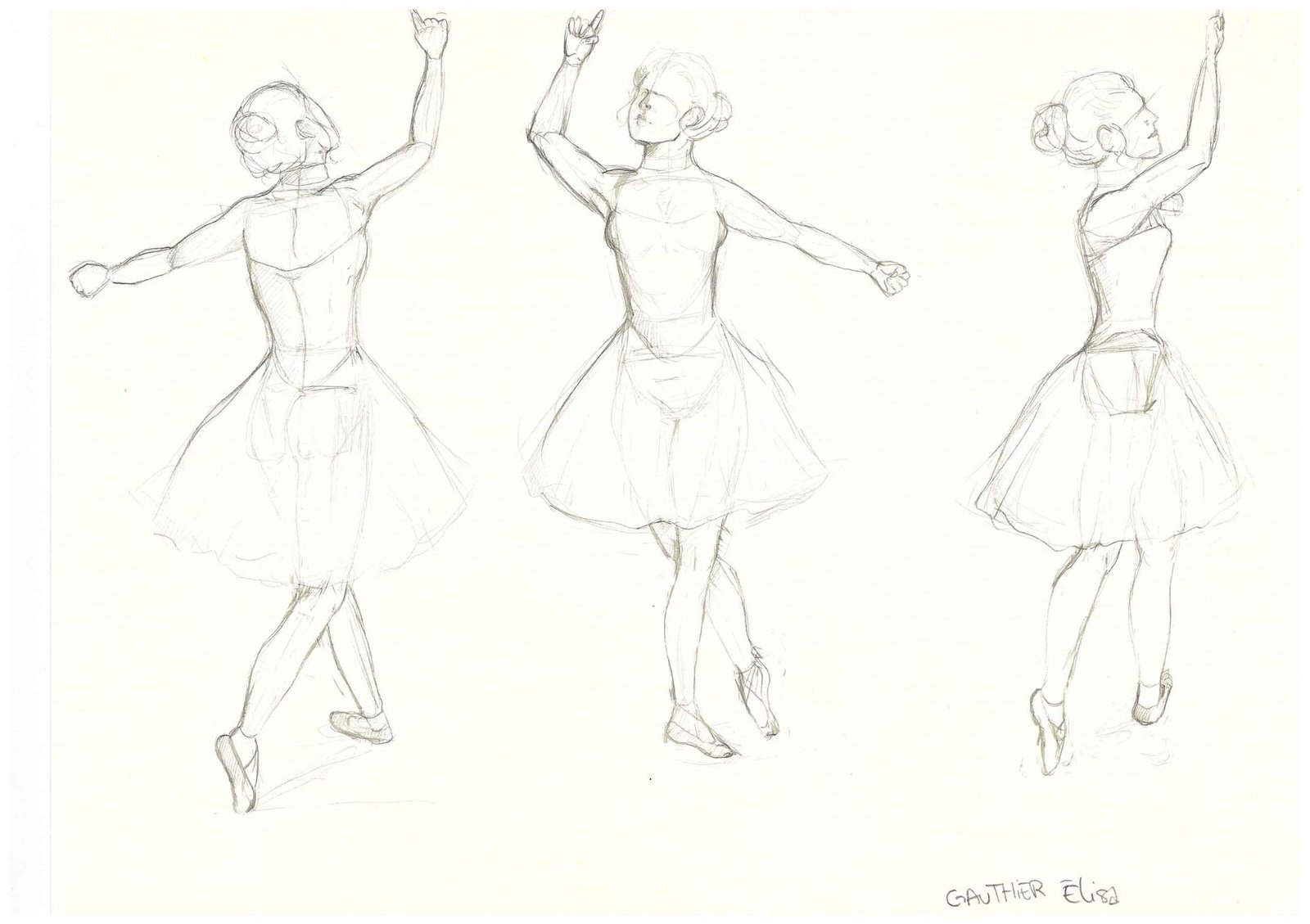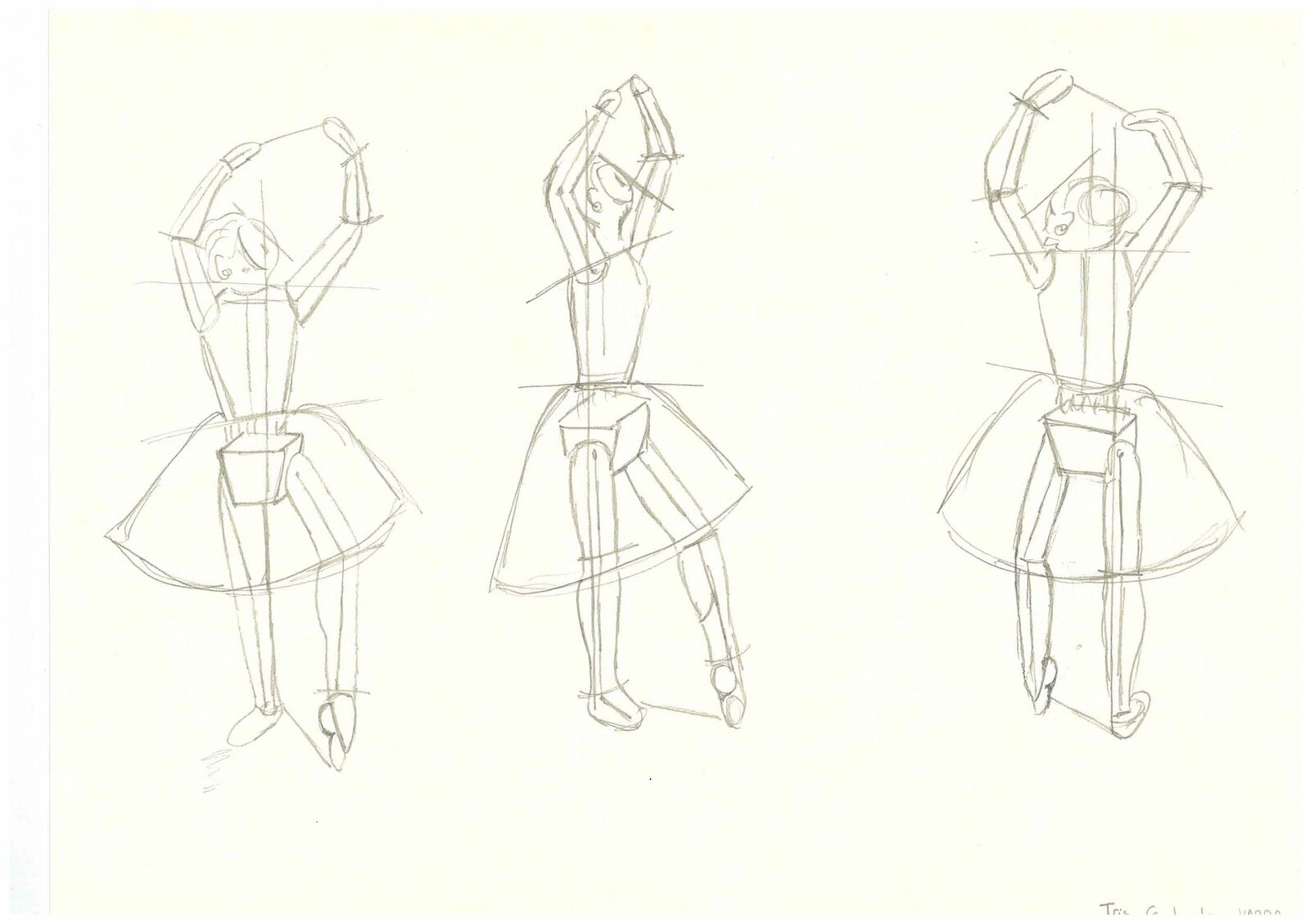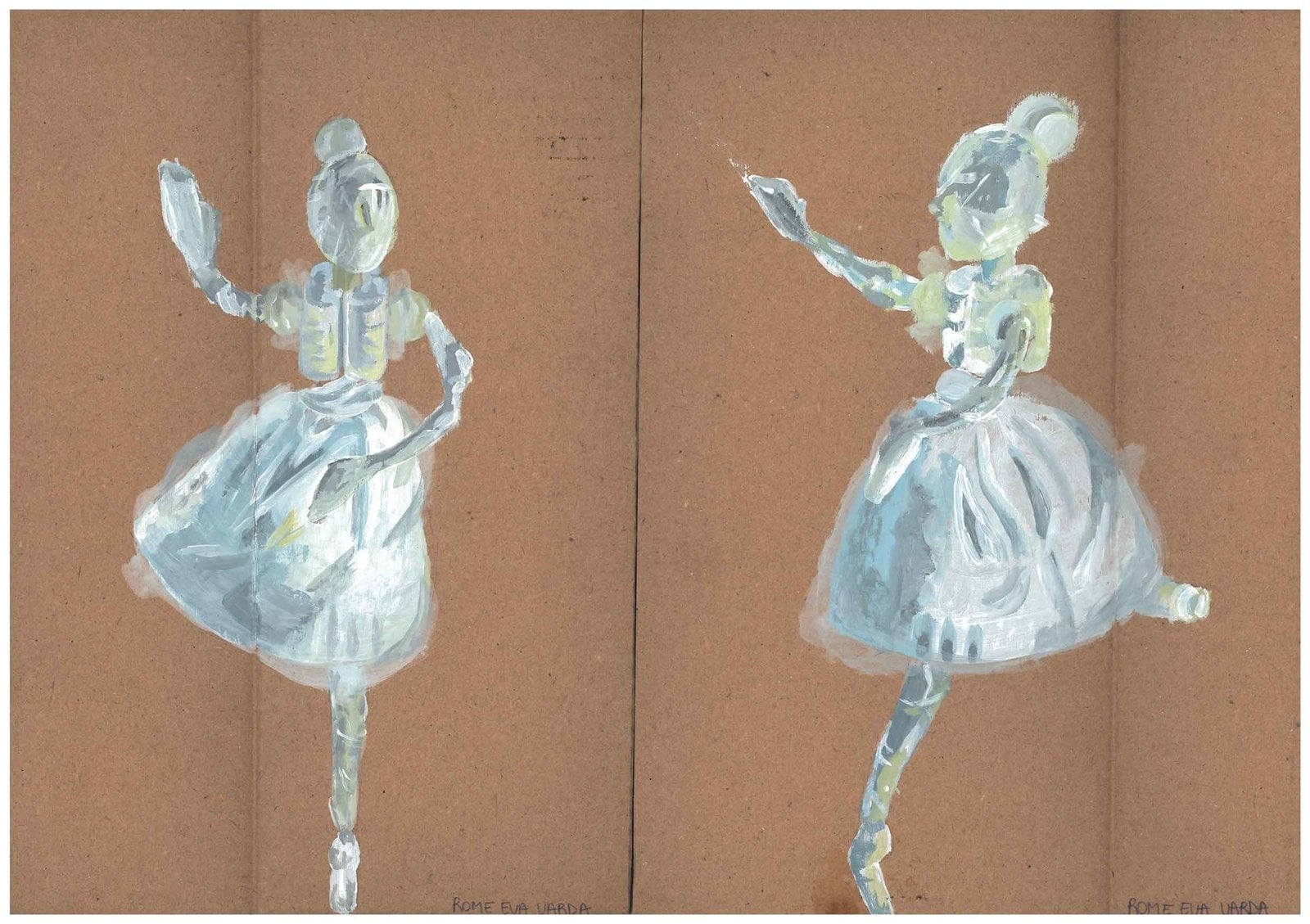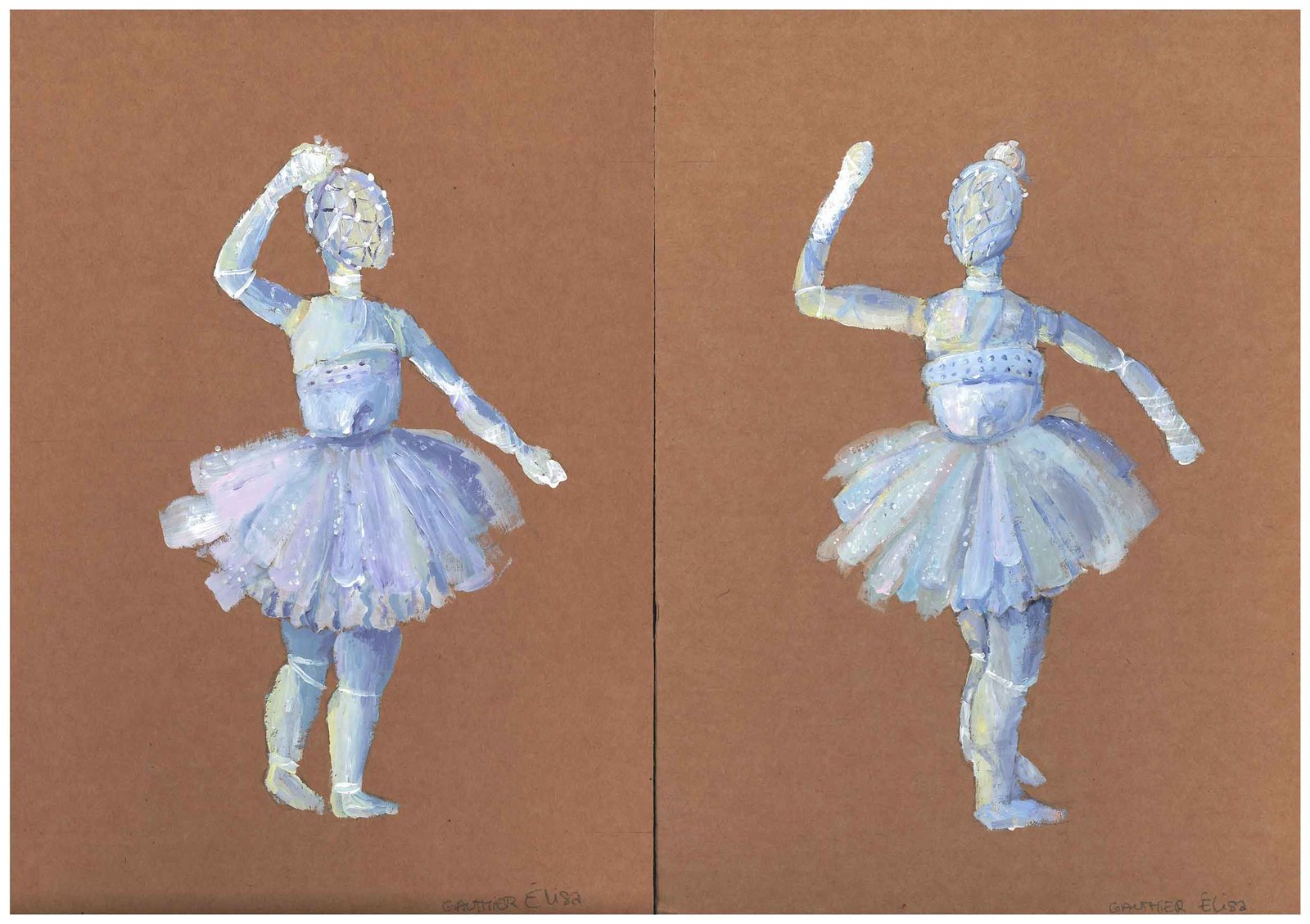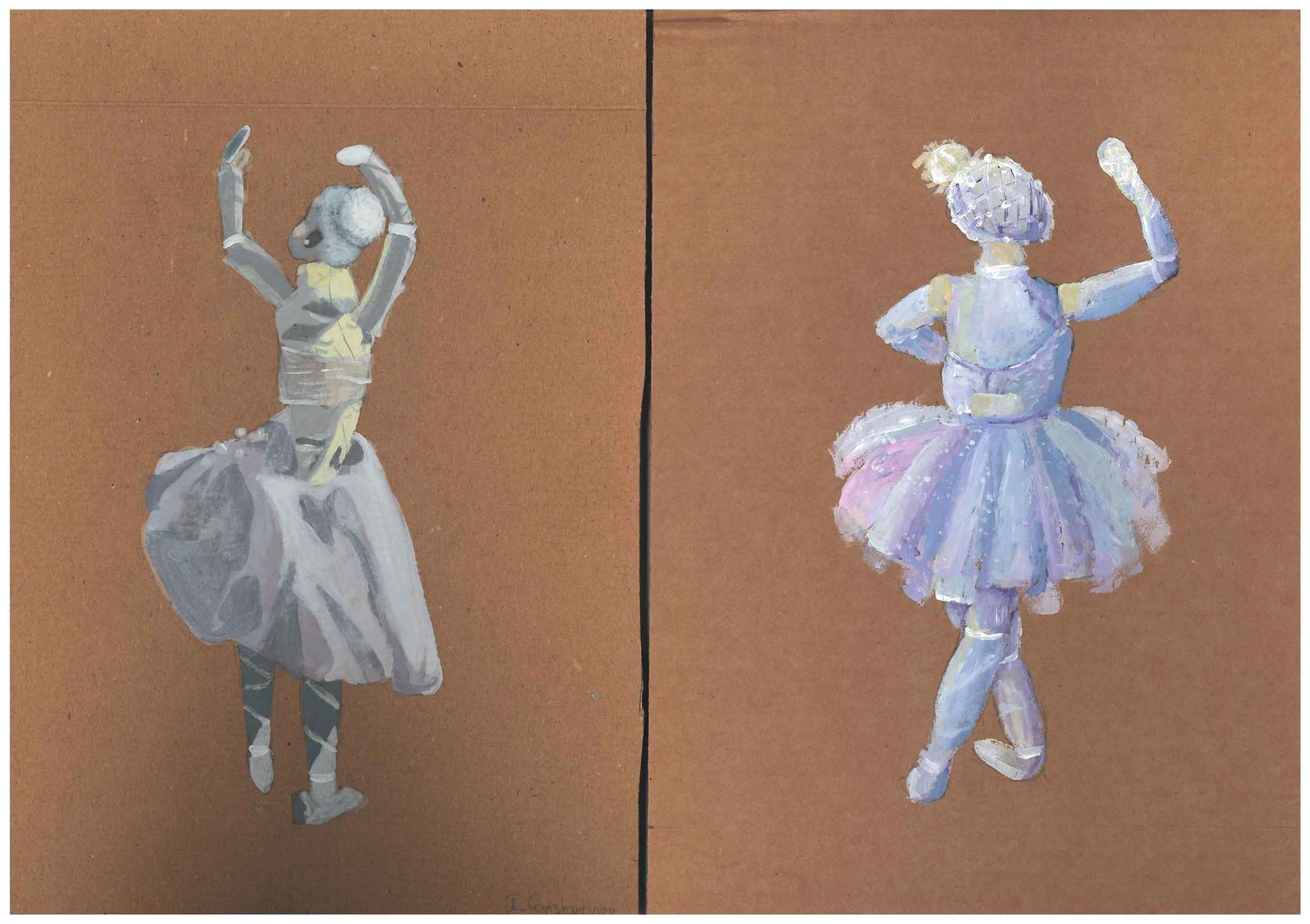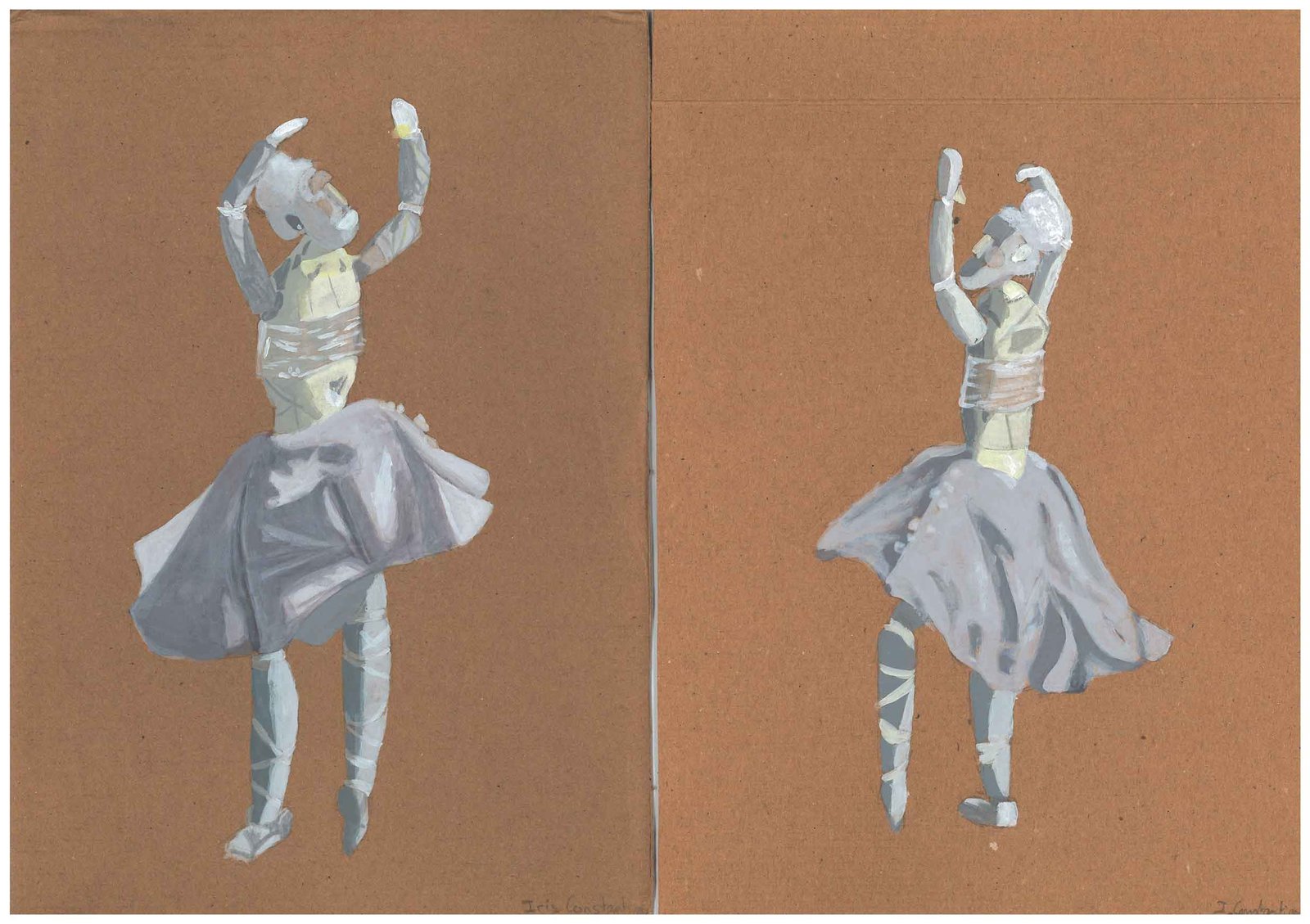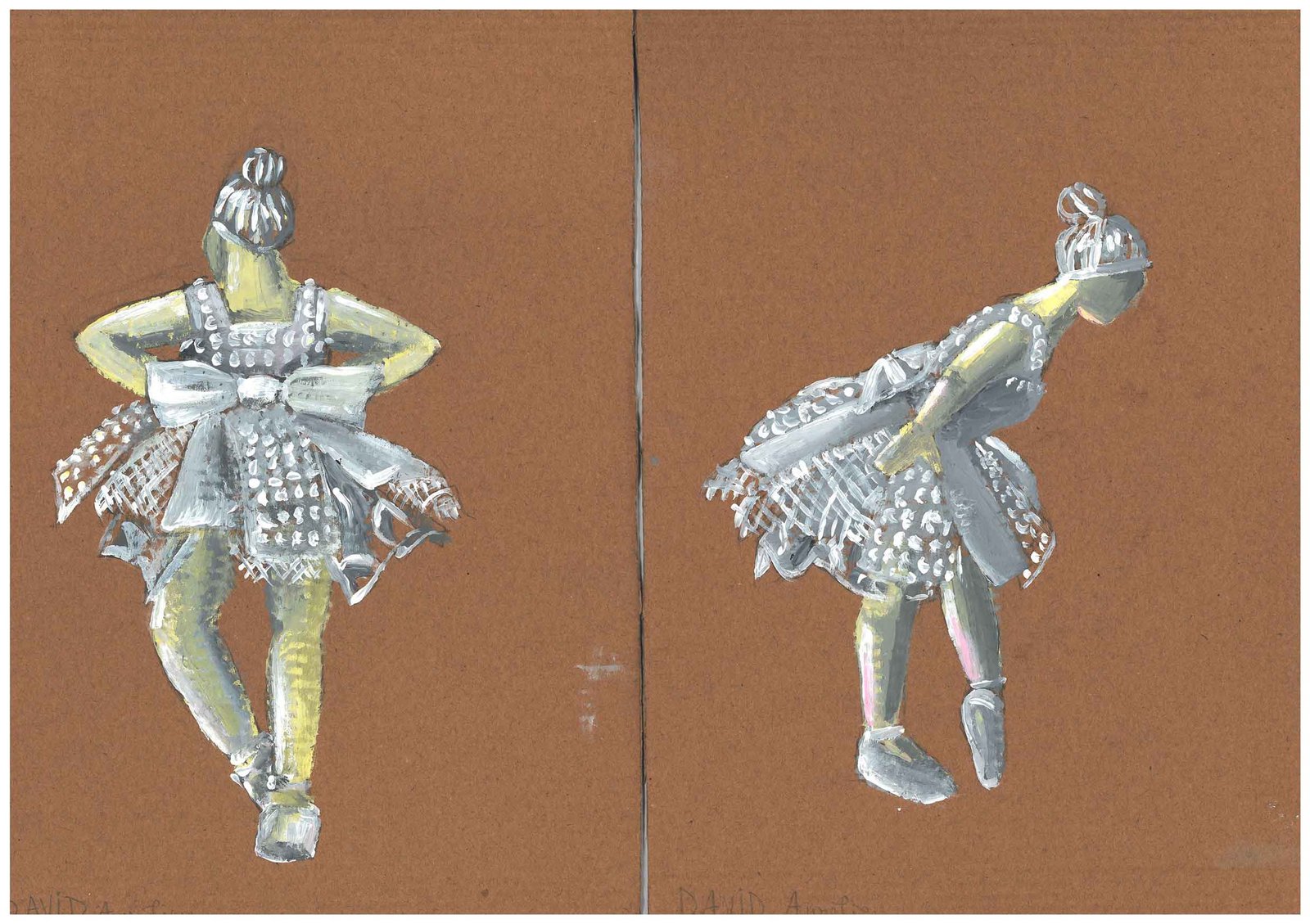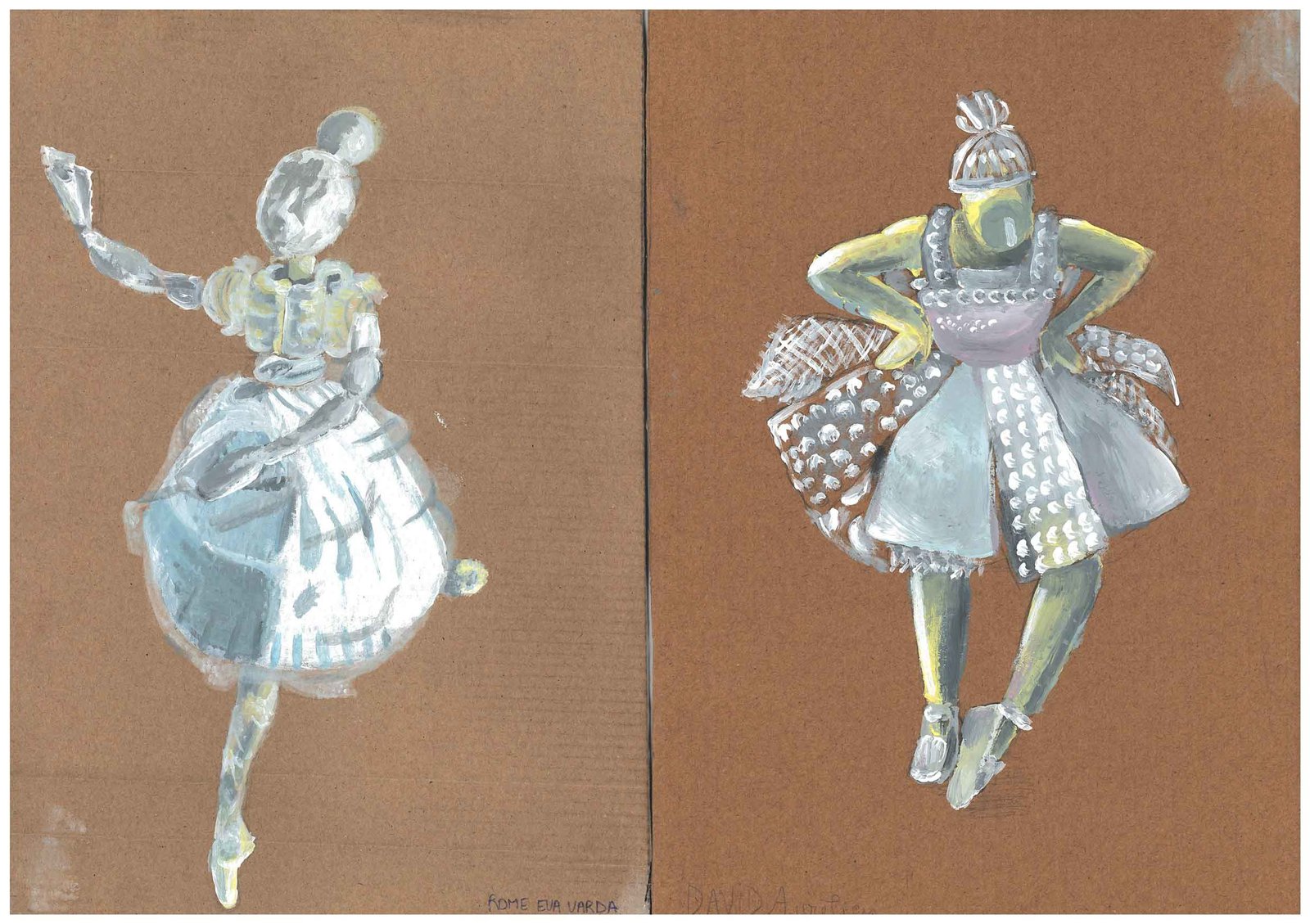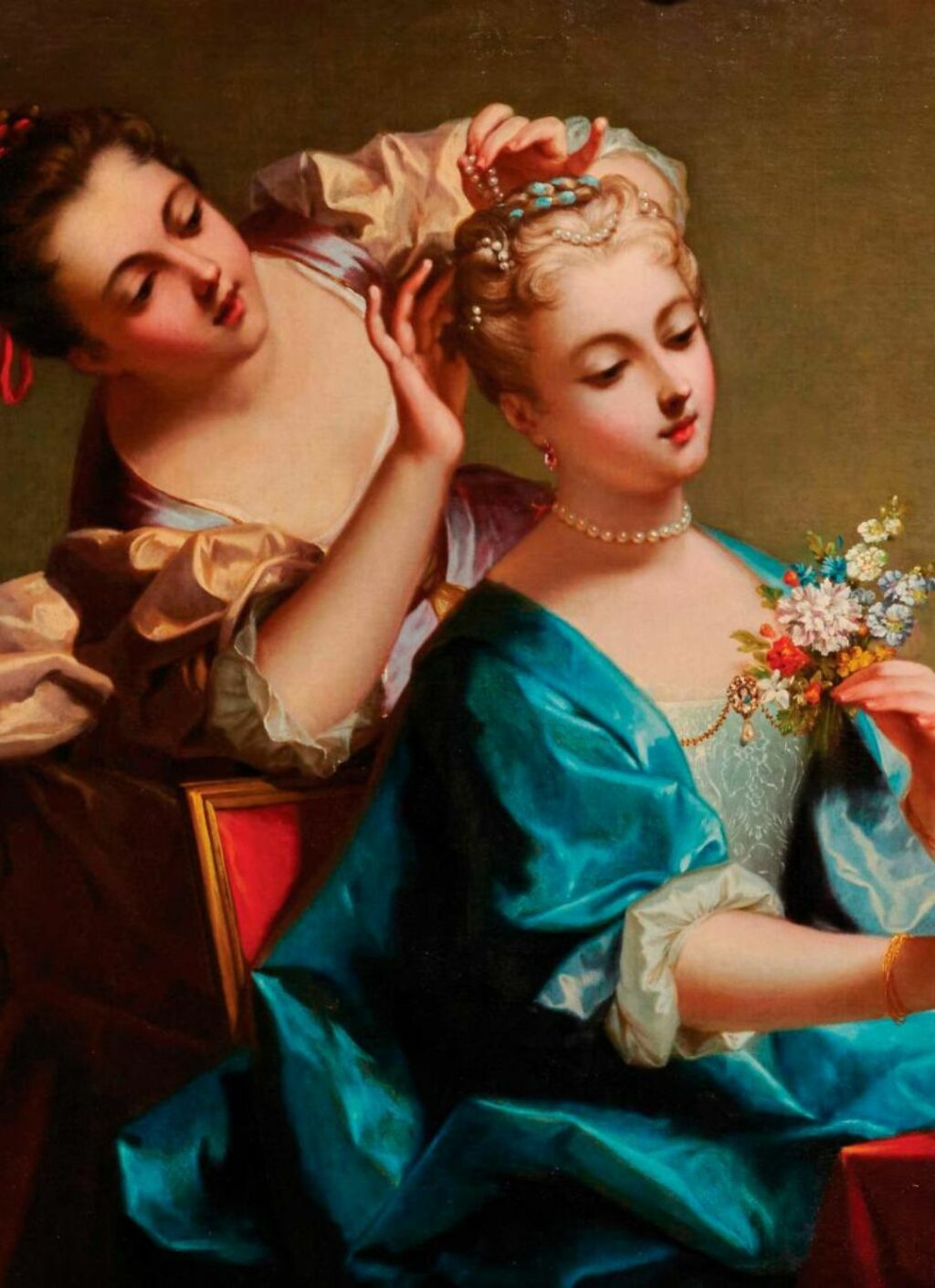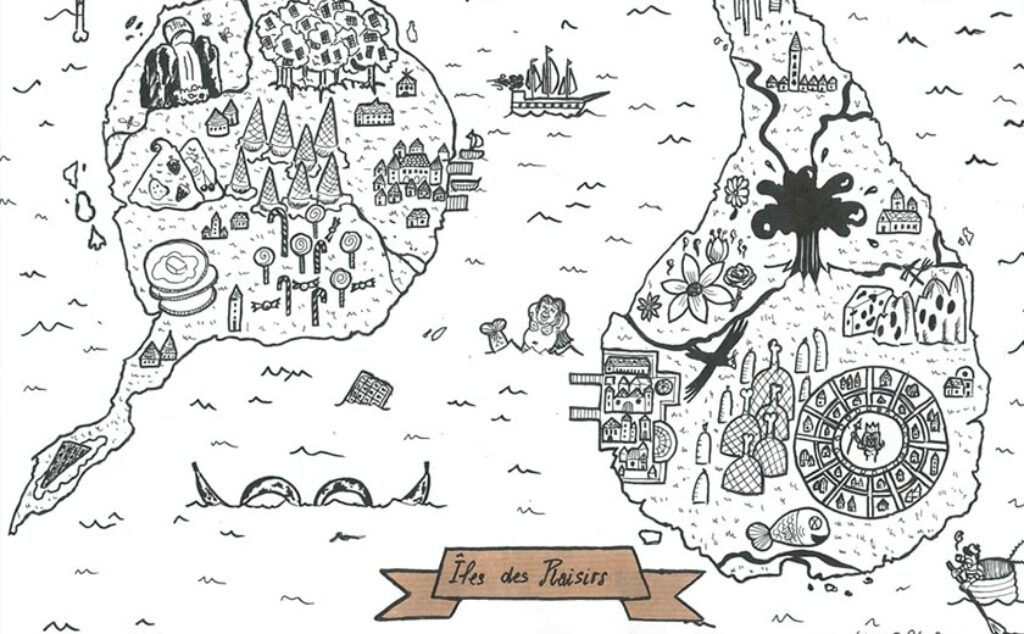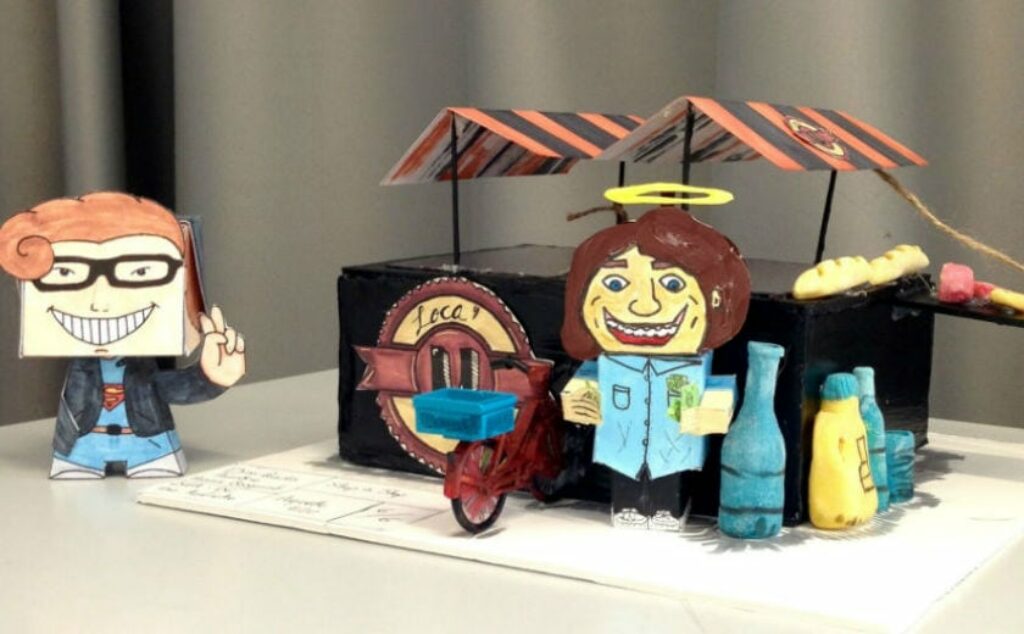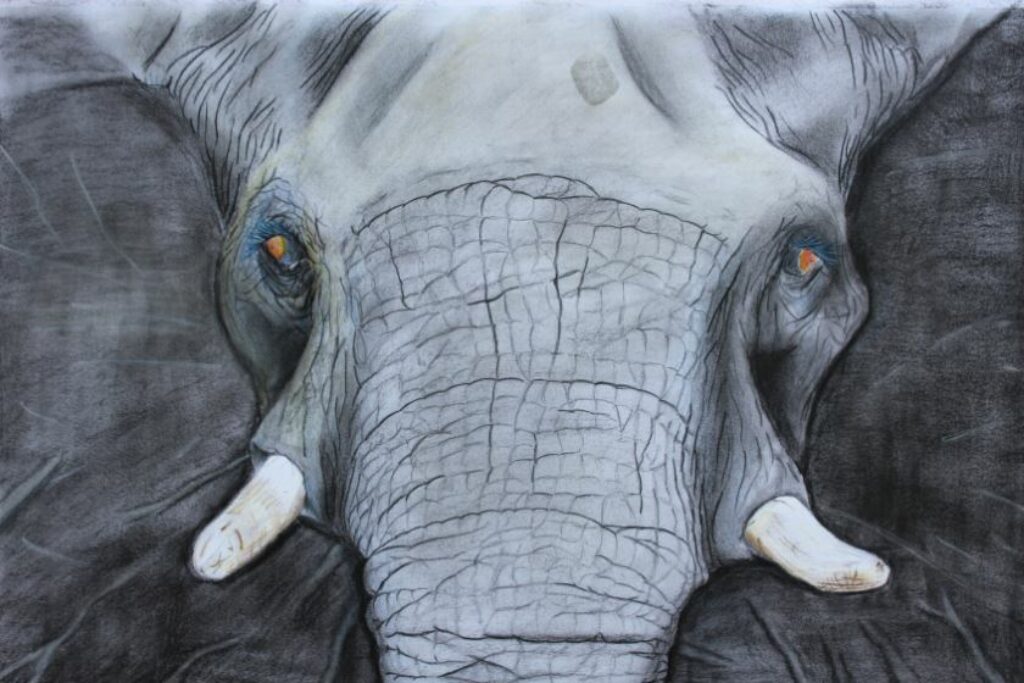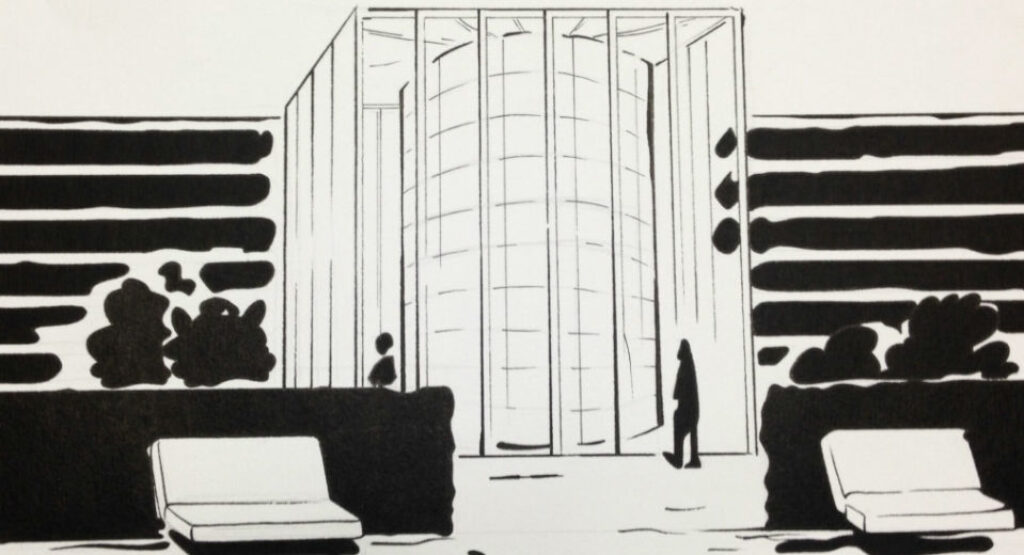
- Training Preparatory Entertainment
- Promotion 2021
A workshop on the colour white for students at the Prépa Entertainment course in Montpellier, based on the study of a ballerina.
The ballerina is certainly the best-known dancer in the world. Dressed in a tutu, a garment inherent to her practice, the ballerina performs classical ballet with art. These graceful creatures have been the subject of numerous studies by renowned painters such as Renoir and Edgard Degas. They fascinate and inspire admiration for the poetry that emanates from their fluid, technical movements.
As well as the imagination that these dancers represent, it’s also an excellent exercise for our Prépa Entertainement students. Indeed, anatomical drawing and drawing a subject in movement are part of the basics that you need to acquire in order to get a solid and serious grounding in drawing. Then there’s the study of colour. A white colour (in this case, for this exercise) can offer a wide range of nuances. These can vary according to the textures and the play of light. It’s up to the students to compile this vast array and come up with their own version of the ballerina.
SUBJECT OF THE EXERCISE
Study different ballerina poses and draw the attitudes in pencil and then in paint. Reproduce one of these poses in the form of a figurine, made up of different elements, all white.
INSTRUCTIONS FOR THE EXERCISE
- Study dancers’ poses and do some iconographic research,
- Make reproductions of dancers in pencil – then in paint – from 3 different points of view,
- Construct a 20 cm figurine, using white materials, that recreates the posture of the original dancer.
EDUCATIONAL AIM
Through this exercise, the students worked on the anatomical postures of a dancer in movement. This enabled them to understand the proportions and movements of the body. An in-depth study of the body, particularly of female dancers, was carried out, drawing inspiration from the work of the artist Degas.
Then their imaginations were put to work, as they were asked to create their own ballerinas from all-white objects. It was up to them to combine these materials to create a coherent, easily identifiable doll. But beyond simple assembly, the students had to respect a set of notions such as the richness and diversity of the materials used (as well as the range of whites), respect for proportions, the movement of the ballerina and the quality of execution.
TECHNIQUES USED
Drawings: pencil and paint.
Sculpture: various materials.
